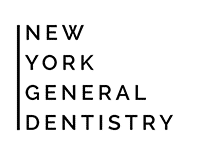Are you unhappy with the look of your teeth? Perhaps you have unwanted gaps in your smile, wish your teeth were a different shape, or are bothered by chips or cracks in your teeth. If this is the case, you may be a great candidate for cosmetic dental bonding. Read on to learn more about this treatment and how it may benefit you.
What is Dental Bonding?
Dental bonding, also known as teeth bonding or composite bonding, is a common cosmetic dentistry treatment that is used to make improvements to your smile. To achieve these improvements, a tooth-colored resin material is applied to the teeth to change their size, shape, or color.
Dental bonding may be used to achieve a number of goals, including camouflaging chips or cracks in the teeth, closing gaps or spaces between teeth, changing the overall shape of the teeth, or concealing tooth discoloration.
What is the Difference Between Dental Bonding and Veneers?
While both dental bonding and veneers are meant to improve your smile, they are not interchangeable terms. Porcelain veneers are created with ceramic shells that stick to the front surface of the teeth. During this procedure, your dentist must remove some enamel from your natural teeth, which means that this treatment is not reversible. Veneers will need replacing every 10-20 years.
Dental bonding may not require significant removal of natural enamel and is reversible. Touch-ups may be needed every 3-10 years to maintain bonding.
What to Expect During Your Dental Bonding Appointment
During your dental bonding treatment appointment, Dr. Chern will first select a composite resin shade that matches the color of your natural teeth. The surface of the tooth will then be prepared to help the bonding material adhere to the tooth’s surface. The resin material is then applied, molded, and smoothed to the optimal shape, and then cured using a special curing light to bond the material to the tooth. This process usually takes about 30-60 minutes per tooth.
Advantages of Dental Bonding
Compared to other cosmetic dental treatments, dental bonding offers many benefits, including:
- Cost-effective: Dental bonding is one of the least expensive cosmetic dental procedures available.
- Minimally invasive: This treatment doesn’t require significant enamel removal.
- Versatile: Dental bonding can be used to conceal a wide range of cosmetic imperfections.
- Convenient: Dental bonding can be completed in just one visit!
Schedule a Consultation
Are you interested in learning more about dental bonding to improve your smile? To set up a consultation with Dr. Chern at New York General Dentistry in New York City, NY, contact our office today.



